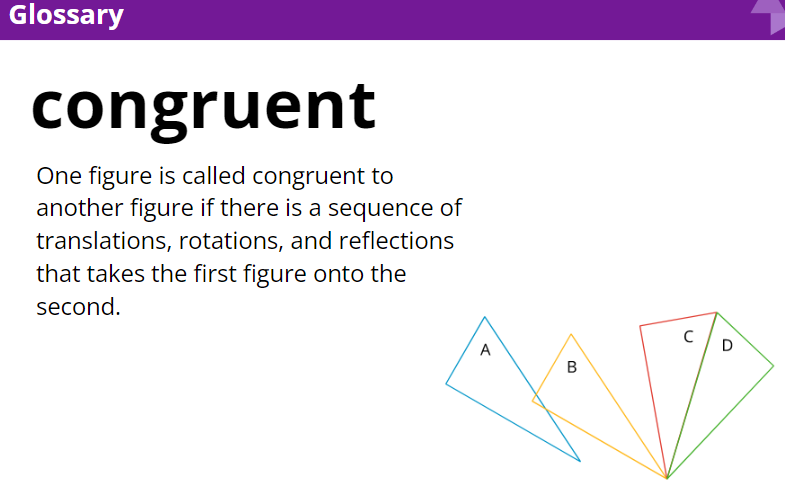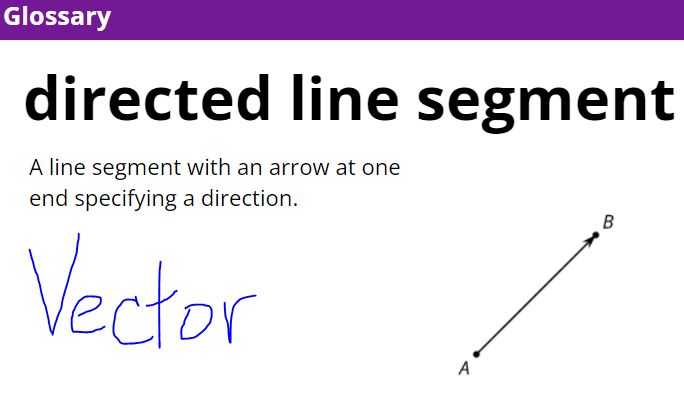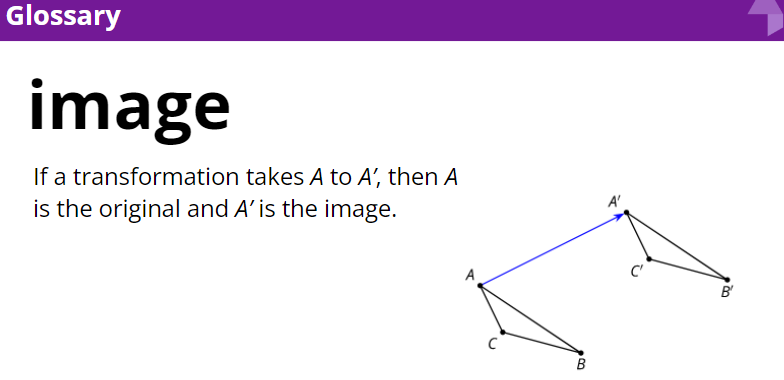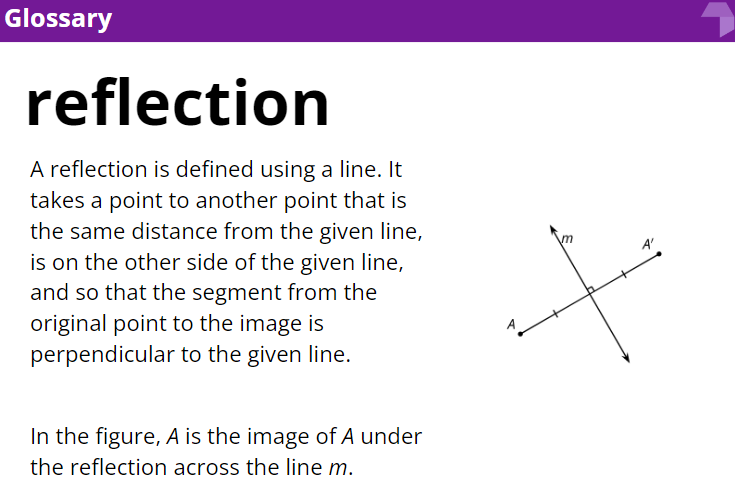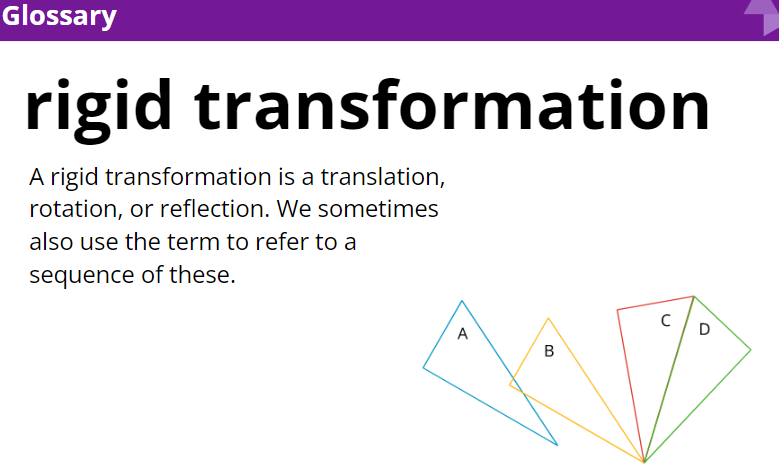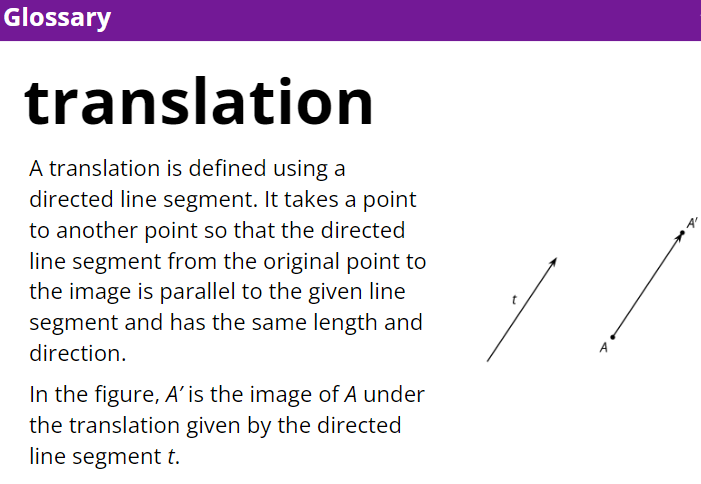L1.13 - Incorporating Rotations
Learning Intentions and Success Criteria
We are learning to:
- Comprehend that rigid transformations produce congruent figures by preserving distance and angles.
- Draw the result of a transformation (in written language) of a given figure.
- Explain (orally and in writing) a sequence of transformations to take a given figure onto another.
- Draw the figure's image after the transformation when given a figure and the description of a transformation.
- Describe the sequence of transformations necessary to take a figure onto another figure.
- Know that rigid transformations result in congruent figures.
13.1: Left to Right
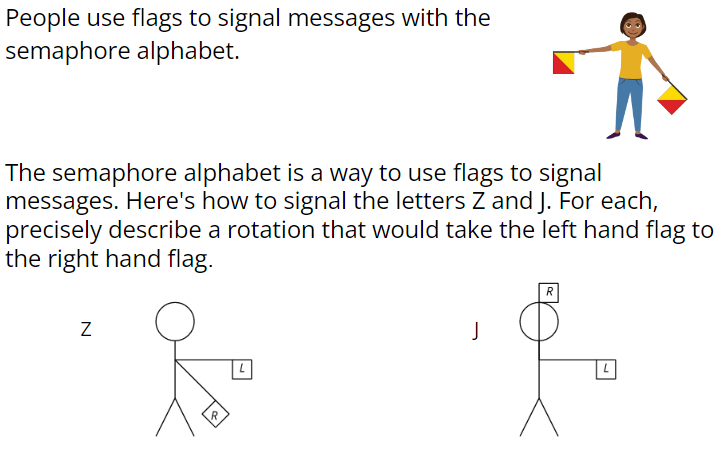
What direction is the left hand flag rotating to the right hand flag?
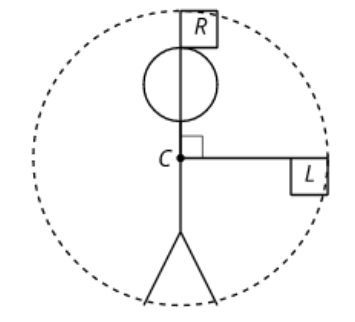
13.2: Turning on a Grid
- Rotate ABCD 90 degrees clockwise around Q.
- Rotate ABCD 180 degrees around R.
- Rotate HJKLMN 120 degrees clockwise around O.
- Rotate HJKLMN 60 degrees counterclockwise around P.
13.3: Translate, Rotate, Reflect
Mai suspects triangle ABC is congruent to triangle DEF. She thinks these steps will work to show there is a rigid transformation from ABC to DEF.
- Translate by directed line segment v.
- Rotate the image ____ degrees counterclockwise around point D.
- Reflect that image over line DE.
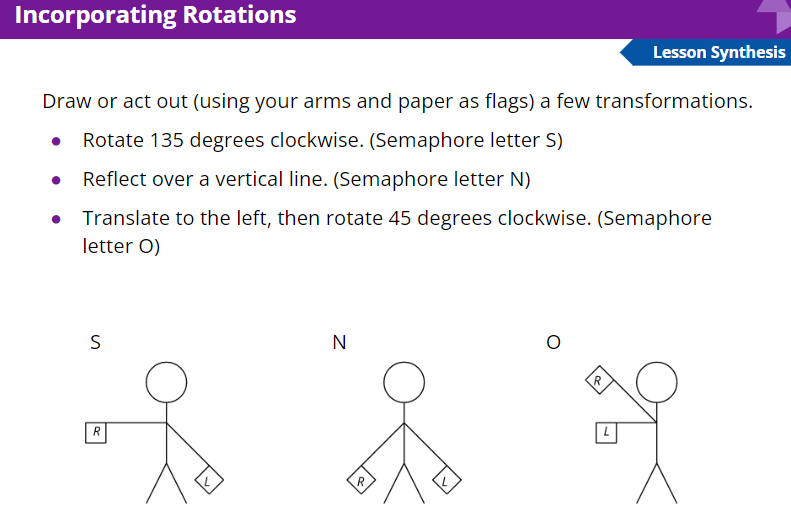
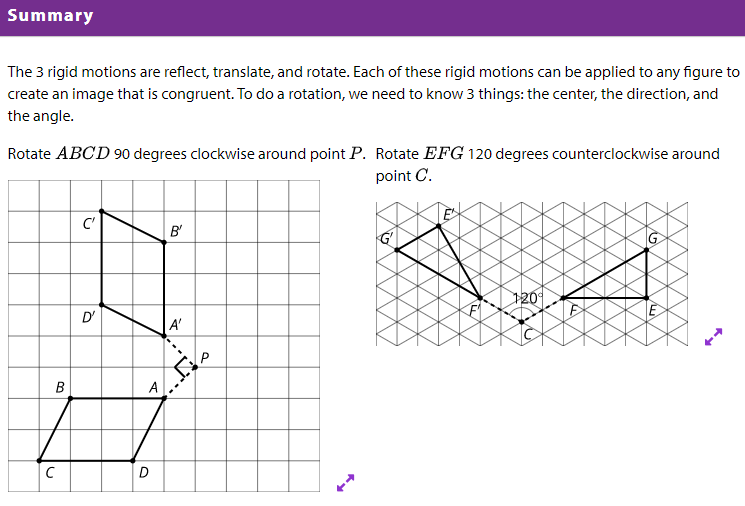
Learning Intentions and Success Criteria
We are learning to:
- Comprehend that rigid transformations produce congruent figures by preserving distance and angles.
- Draw the result of a transformation (in written language) of a given figure.
- Explain (orally and in writing) a sequence of transformations to take a given figure onto another.
- Draw the figure's image after the transformation when given a figure and the description of a transformation.
- Describe the sequence of transformations necessary to take a figure onto another figure.
- Know that rigid transformations result in congruent figures.
Cool-Down: Find a Sequence
Describe the sequence of transformations to take ABCD onto A'B'C'D'.

